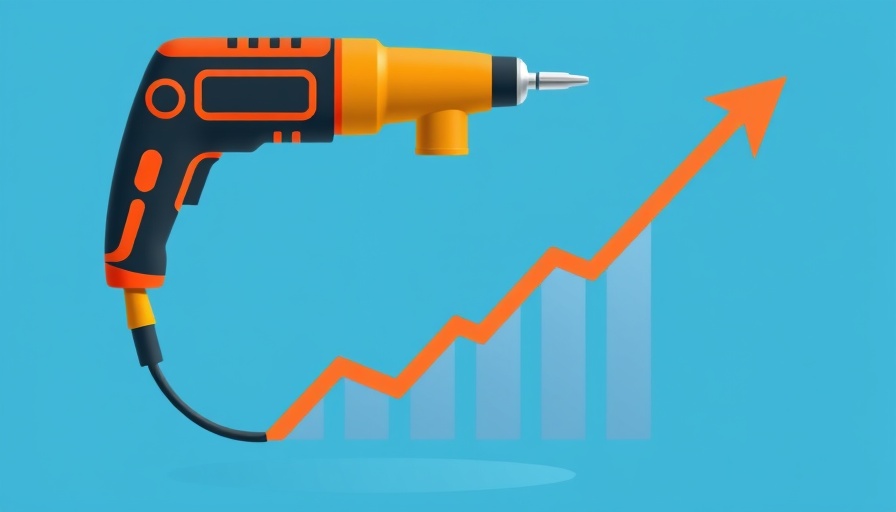
Understanding the Impact of Tariffs on Power Tools
In recent months, the economic landscape for consumers has shifted dramatically due to tariff policies enacted by the government. One key area feeling the strain is the price of power tools. Just recently, Stanley Black & Decker, a leading manufacturer, announced price increases on their popular DeWalt and Craftsman products in direct response to these tariffs. What does this mean for DIY enthusiasts and professionals alike?
Why Are Power Tool Prices Rising?
The answer lies in the tariffs that have been imposed, which are essentially taxes consumers pay on imported goods. As companies face tariffs as high as 145 percent on products from China, they are left with no choice but to pass along costs to customers. This situation is leading to an overall increase in prices across brands, affecting everything from wrenches to power drills, making projects at home progressively more costly. Thus, understanding the role of tariffs is crucial for anyone purchasing tools or considering home improvement projects.
The Consequences for Enthusiasts and Professionals
For DIYers and professionals, these price hikes carry significant implications. Projects that might have been manageable within a budget are now becoming more expensive. Whether you're planning a small craft or a major renovation, the cost of tools will impact your ability to execute plans. Many DIY enthusiasts may find themselves reconsidering their next home improvement venture thanks to these changes in the market. This situation also places professionals under stress as they are forced to adjust pricing for their services, ultimately passing costs on to consumers.
Is There Hope for Price Stabilization?
Stanley Black & Decker is actively seeking to navigate this tumultuous market by shifting some operations to countries with lower tariffs, like Mexico, as part of their supply chain adjustments. With 15 percent of their supply currently sourced from China, this strategic move aims to mitigate rising costs in the long term. Furthermore, negotiations with government officials could lead to adjustments in tariffs, potentially easing the financial burden on both companies and consumers.
How to Adapt to Changing Prices in the Tool Market
For those actively engaged in DIY projects or professional work, it may be time to explore alternative options. This could mean investing in tools now before further price hikes arrive, or researching brands that may not be as reliant on imports. Additionally, keeping a close eye on market trends and manufacturer's responses to tariff challenges can provide insight into future pricing.
Conclusion: Awareness is Key
As tariffs continue to shape the landscape of tool pricing, awareness and adaptability will be vital for consumers. While the current state of the market poses challenges, staying informed can empower individuals and professionals to make thoughtful decisions about their investments in tools and materials. In a climate of rising costs, being proactive can pave the way for more manageable home projects.
 Add Row
Add Row  Add Element
Add Element 


 Add Row
Add Row  Add
Add 

Write A Comment